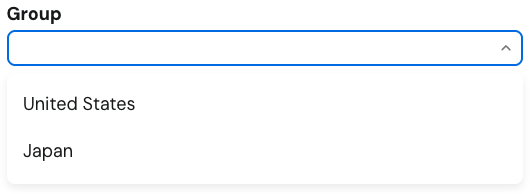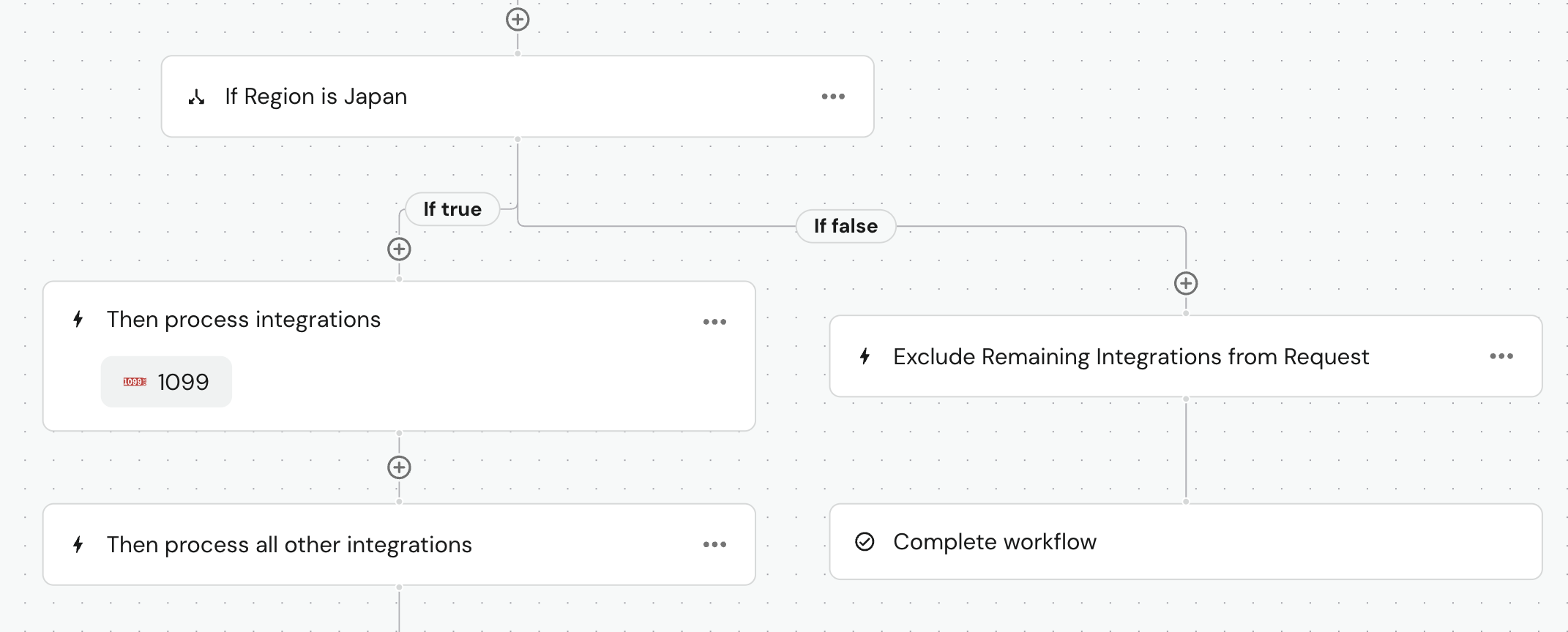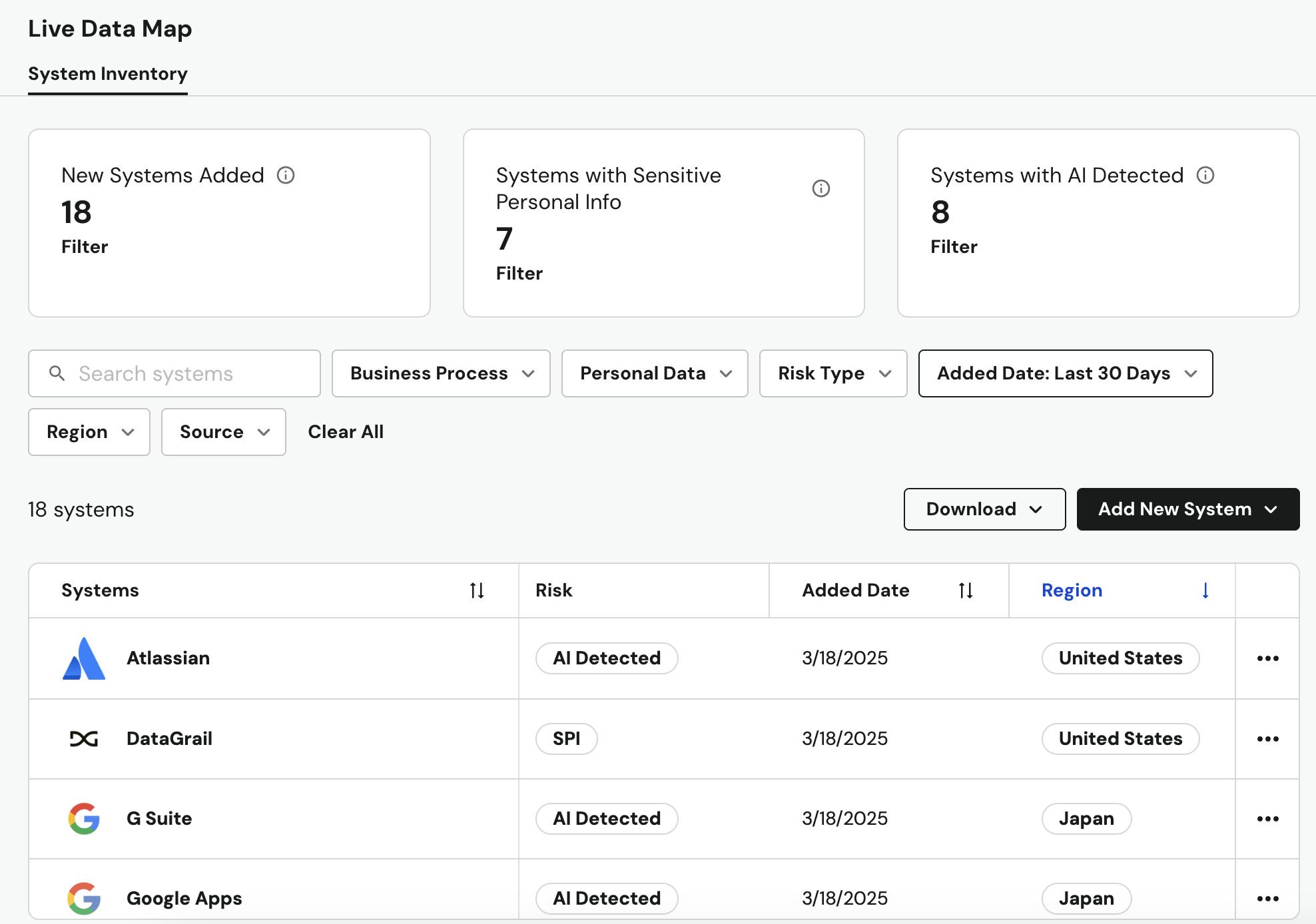Managing Multiple Brands
DataGrail's Multi-Brand/Group Management functionality helps enterprise and multi-affiliate customers manage all of their brands or subsidiaries from a single DataGrail instance.
Group Management in DataGrail enables your organization to do the following:
- Intake, manage, and process Privacy Requests across multiple brands with unique Privacy Request Center URLs for each organization using group-specific workflows and business logic.
- Manage a System Inventory across multiple brands, automatically detecting systems from brand-specific integrations with flexible reporting in aggregate or by brand.
- Perform Responsible Data Discovery across all of your brands, offering privacy risk insight throughout your whole organization or for a particular group.
Group Management is in beta for select customers and prospects. Please contact your Account Manager for more information.
Creating & Managing Groups
To utilize the Multi-Brand functionality in DataGrail, you must start by defining groups:
- Navigate to Settings in the left-hand menu and select Groups.
- Define a Group Display Name based on the structure of your organization. The Group Display Name will appear throughout DataGrail and is the label used when referring to your groups. Common Group Display Names include: Region, Brand, Store, etc.

- Select Add New Group to create groups for each organizational unit associated with your Group Display Name. Once added, each group will automatically be associated with a unique Intake Form URL.

Using Groups in DataGrail
With your groups defined, you can begin to utilize them across DataGrail's product offerings. The group functionality varies by product and is defined below.
Integrations
With the Group Management feature enabled, every Integration can optionally be associated with a Group. This allows Integrations to be managed at the Group level and System Detection and Responsible Data Discovery results to be surfaced with the Group associated with the Integration.

Request Manager
Each group is associated with a unique Intake Form URL, which can be found in the Groups section of the Settings page in DataGrail. All Privacy Requests submitted against this unique URL will automatically be associated with this group when viewed in DataGrail.
Additionally, the primary intake form (e.g. privacy.customer.com) will include a Group dropdown, which allows data subjects to submit requests for a particular brand through one, centralized form. This group field can be customized using DataGrail's Intake Form Customization Editor.

Privacy Managers have the opportunity to change the group associated with a Privacy Request in Step 6 of the Wizard.

Privacy Requests can be filtered and exported by Group to allow Privacy Managers to process and analyze requests at the group and organization level.
The generated Intake Form URL is static and will not update if a group name is changed.
Workflows
The Group Management feature enables new condition nodes in the Automated Workflow Builder. This allows you to select which Integrations to process for specific groups and to create group-specific processing logic for each of your brands.

Live Data Map
The Group Management feature allows Systems to be added to your System Inventory by group. Your inventory can be filtered and exported by group, allowing you to review your Inventory by an organizational unit or in aggregate.

If an Integration enabled for System Detection is associated with a particular group, all detected systems from that integration will be associated with the group as well.
Responsible Data Discovery
If an Integration enabled for Data Discovery is associated with a group, all identified Data Categories will be associated with the group as well.
Data Discovery Results can be filtered and exported by group, allowing you to review your privacy risk by an organizational unit or in aggregate.
Disclaimer: The information contained in this message does not constitute as legal advice. We would advise seeking professional counsel before acting on or interpreting any material.